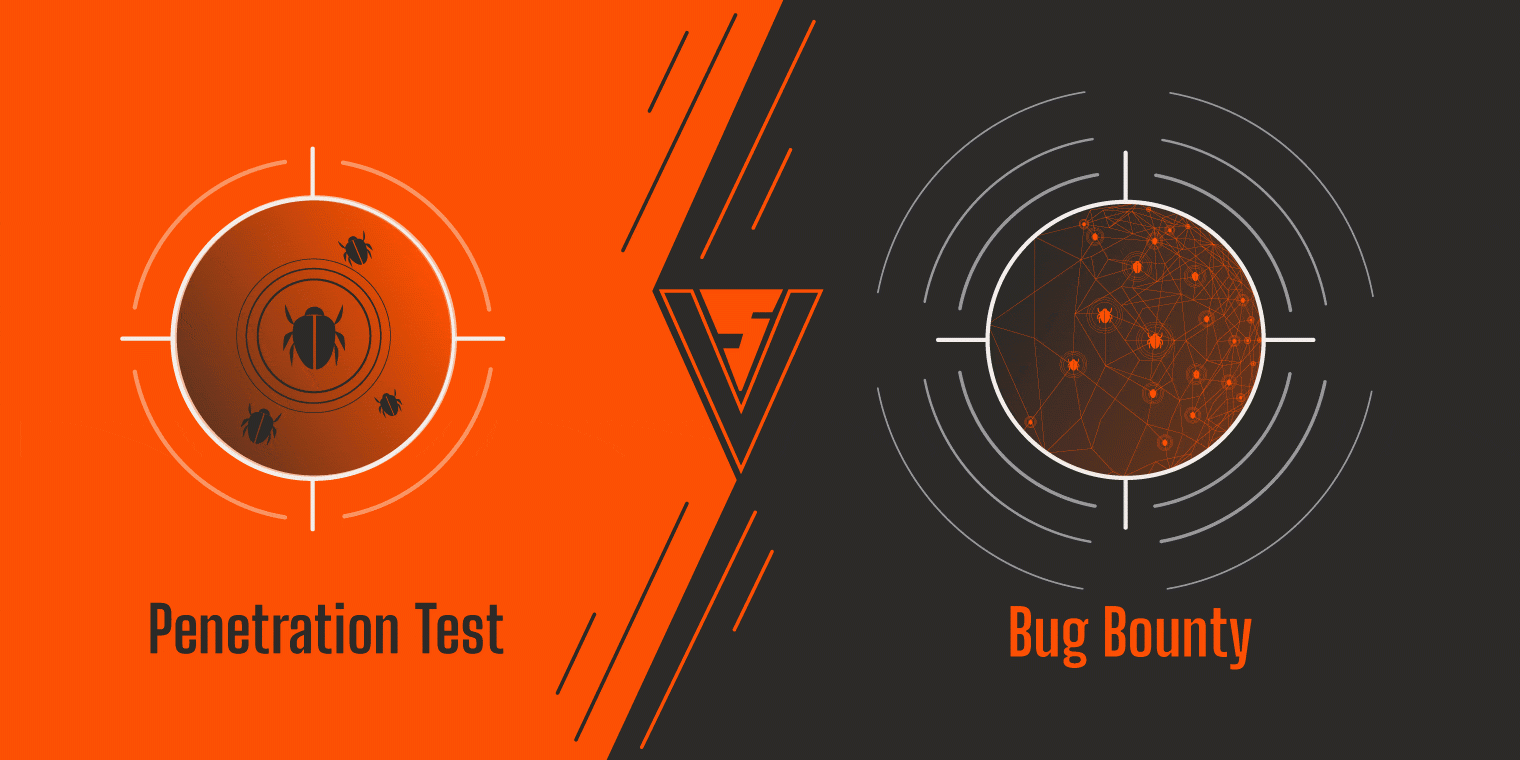
Penetration Testing vs Bug Bounty
If you’re a business owner, then you know that keeping your website and systems secure is of utmost importance. You may have heard of penetration testing and bug bounty programs, but you may not be sure what the difference is between them. Some people believe they are one and the same, while others believe that bug bounty is just a subcategory of penetration testing. In this article, we will clear up the confusion and discuss the key differences between these two types of security testing, as well as their benefits and drawbacks.
What does penetration testing involve?
In penetration testing, testers will attempt to break into your systems. The aim is to gain access to your systems and find vulnerabilities in the process. They will then document it in a concise report along with tips for you to fix these flaws.
Phases of penetration testing:
- Reconnaissance – In this phase, the tester will gather information about the target website such as its IP address, DNS records and robots.txt file.
- Scanning – The tester will use various tools to scan the target website for open ports and vulnerable services.
- Gaining Access – In this phase, the tester will attempt to exploit any vulnerabilities that have been identified in the previous two phases.
- Preserving Access – The tester will attempt to maintain access to the target systems so they can continue to test for vulnerabilities.
- Reporting – The tester will compile all of their findings into a report and provide recommendations for fixing the vulnerabilities.
This process can be time consuming and expensive, so it is usually only performed on a select number of websites that are considered to be high-risk.
It is a more comprehensive form of assessment and can include the following:
- Network assessment
- Vulnerability scanning
- Social engineering
- Physical security testing
- Wireless assessment
- Dynamic application security testing
- Database assessment
- Operating system security testing
- Password cracking
Penetration testing can be done internally or externally, and it typically requires a significant amount of technical expertise. It’s also important to note that penetration testing can be a legal requirement for certain types of businesses, such as banks and other financial institutions.
Advantages:
- Comprehensive assessment of IT security
- Identifies vulnerabilities that can be exploited
- Provides recommendations for fixing the vulnerabilities
Disadvantages:
- Can be expensive and time-consuming
- Requires technical expertise
- Not everyone can perform a penetration test
How does bug bounty work?
Bug bounty programs are administered by online platforms. These platforms connect companies with security researchers, ethical hackers, etc. who are looking for vulnerabilities in websites, applications, and other systems.
A bug bounty can also be offered by a single company in order to find vulnerabilities in their systems. Ultimately, researchers submit reports detailing the vulnerabilities they find, and if the company chooses to fix them, they are rewarded with a bounty.
A bug bounty is not limited to technical vulnerabilities; researchers can also submit reports about legal and policy issues.
Some popular bug bounty platforms are:
- Bugcrowd
- Hackerone
- Synack
- Intigriti
Advantages:
- Easier and faster to set up than a penetration test
- Can be less expensive than a penetration test
Disadvantages:
- May not find all the vulnerabilities present in a system
- Vulnerabilities may be found by researchers who are not qualified to exploit them
Penetration testing vs. Bug bounty:
Is bug bounty the same as penetration testing?
No, bug bounty is not the same as penetration testing. Penetration testing is a more comprehensive and focused security assessment that involves breaking into systems to find vulnerabilities. Bug bounty, on the other hand, will focus on finding vulnerabilities in websites and applications.
Key differences between penetration testing and bug bounty
- Penetration testing is a legal requirement for certain businesses, while bug bounty is not.
- Penetration testing typically requires a lot of technical expertise or qualifications, while bug bounty does not.
- Penetration testing assesses the security of systems as a whole, while bug bounty focuses on finding vulnerabilities in websites and applications.
- Penetration testing produces a comprehensive report detailing the findings, while bug bounty rewards researchers for submitting reports about any type of vulnerability.
- Penetration testing is more expensive than a bug bounty.
- A bug bounty is faster and easier to set up than penetration testing.
- Penetration testing provides a more in-depth assessment of security vulnerabilities, while bug bounty is less comprehensive.
Conclusion
Overall, penetration testing and bug bounty are two different ways of achieving the same goal: identifying and fixing vulnerabilities in your systems. While penetration testing is more comprehensive and focused, bug bounty is a program that rewards people for finding vulnerabilities in websites and applications and can be more cost-effective. While both have their benefits and drawbacks, penetration testing is typically the better option for businesses looking for a more comprehensive security assessment.






